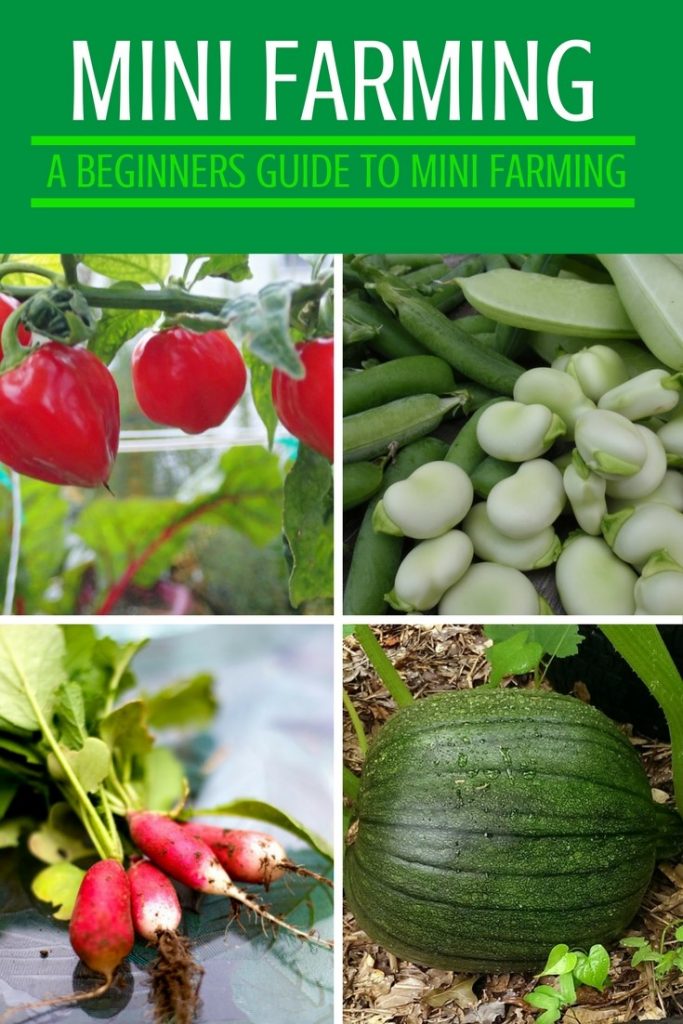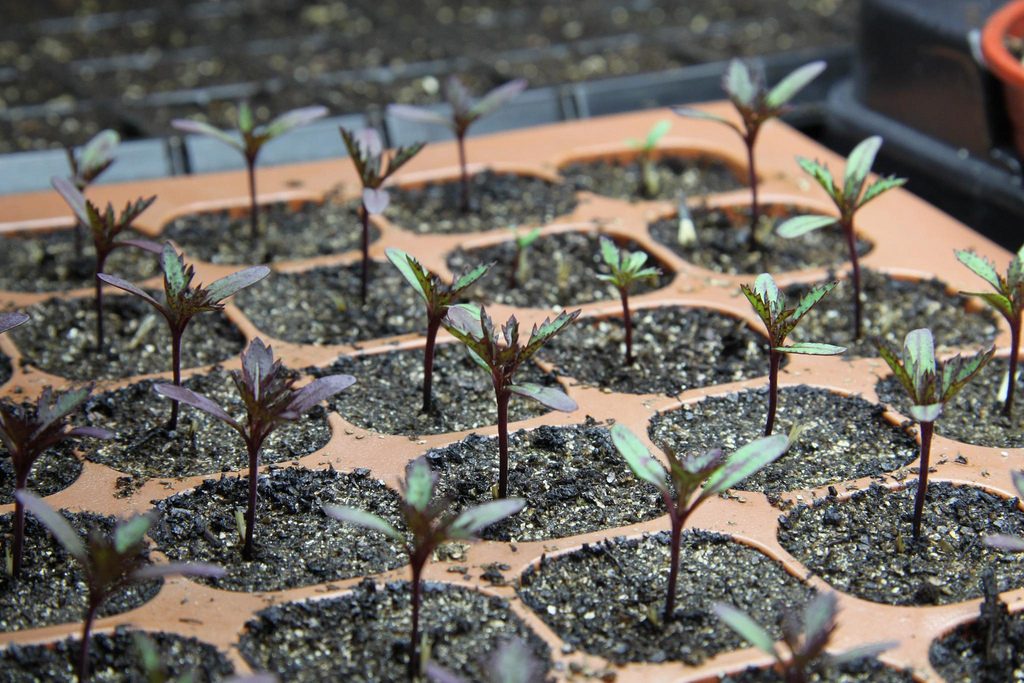Building A Backyard Farm And Growing Organic Food At Home
One’s ability to be self-sufficient goes hand-in-hand with their potential for resiliency. When you can depend on yourself and your land to produce something as necessary as food, you can become someone who is no longer vulnerable to spikes in produce prices or dependent on trips to the grocery store for fresh ingredients. Building your own backyard mini-farm doesn’t have to be a huge task, either.
This short guide will provide you with the basic guidelines for building your own farm, starting from proper soil preparation, growing your seedlings, plant placement and selection as well as potential integration of farm animals and some tips on using your resources efficiently. In the end, you can find the perfect combination to suit you and your family’s needs that reduces your carbon footprint reduces food costs, provides fresh, organic, homegrown produce, and overall simply makes the most of your space. Why pay someone else to do something that you can easily do yourself? Plus, it can be really fun!

What Is A Mini-Farm?
Have you ever imagined yourself “living off the land”? Being self-sufficient to the point where you no longer are dependent on your local grocer for food? You may think that this is only possible in huge, rural spaces, far away from any sort of civilization. However, it is actually completely possible to grow enough food for self-sustainable living on an acre or less of land! This is otherwise known as a “mini-farm”, “micro-farm”, “small-scale farm” or “urban homestead”. Yes, really! You can have your cake and eat it too! Actually, in this case, let us say, “you can have your homegrown, organic quinoa and eat it too!”
There are many reasons why you may be interested in creating your own mini-farm. With climate change at the forefront of many government policies and discussions worldwide, reliable food production is a major concern. While most citizens of first-world countries are not subjected to the possibility of food scarcity, it can never hurt to become more self-sufficient and reduce your carbon footprint at the same time. When you have a “sustainable farm” you essentially consume what is raised, grown, and produced on your plot of land. This is different from commercial farming, which is primarily for profit. Furthermore, growing your own food reduces your need to purchase it at the store, therefore lowering overall food costs and saving you money!
The main element of a sustainable farm is its ability to keep working with no or the least amount of imported resources. Utilizing natural resources, and reusing and recycling waste are key as well as establishing a balanced cycle is essential to the success of your farm. For example, if you are keeping animals such as chickens, goats, or sheep, a good example of the cycle would be feeding the animals with yields from the farm and in turn using the manure to enrich the soil, making it healthier and more productive to grow more plants that will again feed the animals.
Preparing the Soil Building your soil is the first step.
Two essential ingredients for healthy soil are water and air. Many times, new gardeners will simply dig a small hole in the topsoil for the plant. However, one must consider how to the plant will grow, including the direction and depth of the roots and how the plant will draw water and nutrients from the soil. Therefore, it is a good rule of thumb that healthy soil will be sufficiently aerated so that air and water can move freely within the soil, but not so uncompacted that the soil falls apart. Properly aerated soil will retain more water, which will require less watering as well as allows roots to easily penetrate to the desired soil depth.
Learn how to greatly improve your garden soil beyond belief with simple, very easy methods.
When selecting your area for planting, make sure the space will get plenty of sunlight and is not too close to other plants that may put your plot at risk of pests. Once you have selected the land for planting, preparing the soil properly will give you the best chance for success. The size of your planting beds is dependent on your available space, but keep in mind that paths should also be established as walking on the soil will compact it, which will reduce the aeration of the soil. It is recommended to dig at least 12 in (30 cm) below the surface of the soil. For some crops, it can be beneficial to dig as low as 24 in (60 cm) below the surface.
When digging, make sure to remove all weeds, weed roots, and stones. As you are digging, take a look at the soil. Does it appear more sandy or clay-like? The answer will be a good indicator of what you would add to the soil to enhance it for plant growth. If the soil is more clay, it may feel more sticky and dense and it can easily be rolled into a ball, with no or limited cracking. Clay soil can be very fertile, but may also be very heavy and slow to drain. To improve clay soil, you may consider using a raised bed to assist with drainage or adding additional bulky organic material such as “horticultural grit”, which can essentially be small pieces of angular, crushed materials such as limestone or granite. This will assist with aeration and infiltration. If the soil is sandier in texture and appearance, this may be easy to dig, but will not hold nutrients and water efficiently.
To improve sandy soil, compost is recommended. This can be easily purchased at a garden center. However, if you want to maintain a more sustainable cycle with your mini-farm you may want to consider establishing your own compost. Composting is the perfect way to reuse your farm’s “waste” in a way that will improve the fertility and condition of your soil, provide nutrients for plants and microorganisms, help to increase water retention, and reduce landfill waste. Your compost should be made of a mix of carbon and nitrogen with a good rule to use one-third green materials to two-thirds brown materials. “Green” materials include: table scraps (avoiding any meat, bones, or fish scraps), green leaves, weeds, flowers, coffee grounds, tea leaves, etc. “Brown” materials include: dried leaves, hay, pine needles, corn stalks, newspaper, cardboard, and even dryer lint!
Start by loosening the soil up to approximately 12 in (30 cm) below the ground. Add a small layer of twigs or straw first to assist in aeration and drainage. Then, add thin layers of compost material, switching between wet ingredients, such as table scraps, and dry ingredients, such as leaves. Don’t make the layers too thick, as this will slow the decomposition process. Finish with a layer of green manure such as grass clippings, or any other nitrogen source, and then cover the pile so that it will retain proper moisture. Make sure that you either water the pile occasionally or uncover it during rainfall.
Placing the pile in the shade can also assist with moisture retention. You may also need to turn the pile every few weeks with a pitchfork or shovel to ensure proper oxygen. The compost should turn from a musty smell to an earthy smell, where the materials become more difficult to recognize and feel rich to touch. Most piles will be ready in four to six months depending on the materials used as well as the climatic conditions.
Growing Your Seedlings
Growing your own seedlings versus purchasing the already sprouted plants may seem as though you're just adding extra work to the already seemingly large task of building your own mini-farm. However, there are many benefits associated with sowing your own seeds such as lower costs, a larger variety to choose from, the potential to grow high-quality plants, and, of course, the satisfaction of knowing that you have completed the entire cycle of your plant from seed to harvest.

The first step will be to choose the right container. Depending on your plants, the container should be about two to three inches deep (five to eight cm), with plenty of options for drainage. You should plant the seeds about one to two inches (two to five cm) apart. Keep an eye on your seedlings to ensure that roots are not touching the bottom of the container, as this is a signal it is too small and may damage the plant.
Create a protected space such as a small greenhouse for the seedlings to begin the sprouting process. This will also help to keep them free from pests. Once you begin to see some sprouting from your seeds, keep in mind that proper transplanting to your garden area will be vital to the health of the plant. Start by “hardening off” your seedlings by transferring them from the protected temperature to the temperature of the surroundings.
After a few days, the seeds are ready to be transplanted into the garden. It is very easy to find seeds at any garden center, however, to maintain a self-sufficient farm cycle, it is recommended to use open-pollinated (OP) seeds. OP seeds are naturally pollinated, either by insects or wind, and allow the farmer to save the seeds on the farm, which will provide for future crops, thus saving resources and lowering costs. OP seeds are not genetically modified and will breed true-to-type plants, which resemble the parent plant and are not a hybrid. You can then reuse the OP seeds harvested the year before for the next year’s plants. Do a simple online search to determine where you can find OP seeds near you.
Plant Selection And Placement
Grow Robust Organic Vitamin Rich Vegetables for a Healthier Diet
To maximize your production in a small space, implement an intensive planting design. Intensive planting creates an environment for your plants where roots and plants have an uninterrupted grow space, while at the same time the close proximity of the plants enhances soil and establishes a consistent area of living mulch, ideal for growing conditions. This placement will also reduce weed growth and maximizes the number of plants in the given space so production is increased.
Companion Planting
Companion planting provides benefits for your entire farm by establishing a planting layout of vegetables, fruits, and flowers that support each other and deter pests to create a mutually beneficial relationship to bring harmony between the plants, insects, and soil. Some common companion choices are Basil near other garden crops such as tomatoes or lettuce, which can improve the flavor and growth as well as deter pests.
- Beans near crops such as beets, cabbage, catnip, marigolds, cauliflower, cucumbers, potatoes, corn, savory and strawberries and away from crops such as beets, garlic, kohlrabi, leeks, onions, and shallots.
- Beets near crops such as broccoli, Brussel sprouts, bush beans, cabbage, cauliflower, onions, chard, and kohlrabi away from crops such as field mustard, charlock, and pole beans.
- Corn near crops such as melons, beans, peas, early potatoes, pumpkins squash, and soybeans.
- Garlic near crops such as cabbage, cane fruits, fruit trees, roses, and tomatoes and away from crops such as peas and beans.
- Onions near crops such as beets, cabbage, carrots, chamomile, lettuce, and parsnips and away from crops such as peas and beans.
- Peppers near crops such as basil, carrots, eggplants, onions, parsley, and tomatoes and away from crops such as fennel and kohlrabi.
- Potatoes near crops such as basil, beans, cabbage family, corn, eggplant, flax, hemp, marigolds, peas, and squash and away from crops such as apples, birch, cherries, cucumbers, pumpkins, raspberries, sunflowers, tomatoes, and walnuts. Also, consider that crop rotation will also be necessary to maintain the health of your plants.
When large groups of the same crop are placed in one area for an extended period of time, they become an easy target for pests. Furthermore, when crops of the same family have been placed in the same location over a long period of time, this depletes the nutrients of the soil, potentially requiring additional artificial fertilizers to maintain soil health. Instead, to maintain healthy, organic soil, do not plant crops of the same family in the same location within a period of three years. This creates diversity for the plant bed, enhances the soil, and minimizes the potential for disease and pests.
Plant Classification
To classify plants in terms of a crop rotation plan, follow this helpful guide:
- Brassicas (cabbage family) Broccoli, Brussels sprouts, all cabbages, kohlrabi, cauliflower, kale, mizuna, pak choi, arugula, rutabaga, turnip
- Legumes (bean & pea family) Snap peas, peas, bush, pole, lima, fava, dry beans
- Solanaceae (potato & tomato family) Eggplant, potato, tomato, peppers
- Alliums (onion family) Garlic, all onions, shallot, chive, leek
- Umbelliferae (carrot & root family) Celery, celeriac, cilantro, fennel, carrot, parsnip, parsley, dill
- Cucurbits (squash & marrow family) Summer/ winter squash, cucumber, melon, pumpkin
- Chenopodiaceae (beet family) Swiss chard, spinach, beet,
- Miscellaneous All fruit, mint, oregano, rosemary, sage, basil, lettuce, endive, cress, Jerusalem artichoke, asparagus, okra, corn salad, chicory
A simple classification of various plant species. Source: growveg.com. When planning your crop rotation, keep in mind some tips such as brassicas (cabbage family) will fix the nitrogen in the soil, making it ideal for legumes to benefit from nutrient-rich conditions.
In areas where there is very rich soil, avoid planting root vegetables, as this will cause lush foliage instead of the edible parts of the plant. Keeping in mind the difference between calorie crops, carbon crops and staple crops will also benefit your garden as well as the dietary balance of your yield.
A calorie Crop is a vegetable that will produce a large amount of food energy (calories) in a specific unit of space. Examples of calorie crops include root crops such as potatoes, garlic, parsnips, and perennial vegetables. Calorie crops are typically considered the best option for feeding yourself and your family as they provide the most amount of nutrition in the smallest amount of mass. Calorie crops tend to be heavy feeders and may drain your soil’s nutrients quickly.
Carbon Crop, also known as “biomass”, is a food plant that produces a large amount of carbonaceous material to be used in compost. Carbon crops are perfect for promoting sustainable soil fertility, as they will establish a balance for heavy feeders such as calorie crops when used as compost and are recommended to make up approximately 60% of your total planted area. Carbon crops include maize, sorghum, amaranth, quinoa, millet, rye, wheat, barley, rice, oats, and sunflowers. In addition, when you grow carbon crops such as grains, they also provide a beneficial addition to your dietary calories.
Staple Crops can be considered a mix of carbon and calorie crops. These are crops that you could consider necessary parts of your diet that have the potential to be stored for long-term periods without spoiling. Examples include grains, root crops, and dry beans, including soybeans, which can be used for other purposes such as soymilk or soy flour. A crop could also be considered a staple crop if it can easily grow well in your region, provides high nutrients or calories, is easy to harvest, process and store as well as adds to healthy soil fertility.
What Animals Would Be Suitable For A Mini-Farm?
Depending on the amount of available space, you may also consider adding some farm animals to make your mini-farm complete. Large livestock such as cows or horses should not be considered, as they need a lot of land area to thrive. Animals can assist in maintaining a healthy sustainable balance as they can feed off of grains, as well as provide manure for compost or fertilizer. As well, they can provide other benefits such as goat milk or chicken eggs.

Adding animals to your farm, however, will surely increase your responsibilities on various levels and may be subject to certain regulations. Therefore, it is imperative to do proper research as to which would be best suitable for your purposes.
Rabbits
Rabbits are excellent candidates for small spaces. They can easily be managed in small, wire hutches and tend to be odor free, and do not attract flies. They can also provide a high meat return for the amount of feed and labor invested. Rabbits can be very predator prone, however, so it is important to ensure their enclosing is secure so that they won’t become easy prey for any neighborhood prowlers.
Chickens
Chickens are also a great option for a mini-farm. They can provide highly efficient meat as well as eggs daily. They can happily feed off of meat scraps, bugs, weeds, and table scraps and are relatively low-maintenance. Like rabbits, however, the chicken’s enclosure must be secure as they are also an easy target for predators.
Goats
Goats are also a popular option as they are very intelligent and are highly efficient produces of milk. You can easily gain about a gallon of milk each day with three to four pounds of grain and a few pounds of hay. During the lactating period (typically 10 months), however, the dairy goat must be milked twice per day, every day, which may be more responsibility than you are looking for.
Pigs
Pigs are one of the most efficient animals to raise in regard to their waste-to-meat ratio. Pigs can eat kitchen scraps, garden greens, grains, roots, eggs, or other meat, making them the perfect example of recycling! Pigs also don’t require a great deal of space.
Using Water Efficiently
To build your sustainable farm, maintain the mindset that “everything can be used”. This is especially true for your already present natural resources. We’ve already discussed ways to improve the already present soil, utilizing yields for compost and positioning your vegetables in proper sunlight, but what about the one ingredient that is absolutely essential to any healthy farm: water?
If you already have a water supply such as a small stream or river on the property, consider how this can be used for your farm instead of relying solely on your well supply. Gray water refers to the water that has already been used in the sinks, bathtubs, showers, dishwater, or washing machine. This is no longer fit for human consumption but would be absolutely fine for your garden. You can choose to manually collect the water from the bathtub or even simpler is to reroute drainage pipes to a small storage tank. With the reuse of gray water, you can recycle up to 50 gallons of gray water per week!
Another great option would be to harvest rainwater. You can easily and inexpensively place a storage barrel at the bottom of the gutter pipe to collect large amounts of rainwater from the roof. For example, a 1,500 square foot (139 square meters) roof in a region that gets at least twenty inches of rain per year, could potentially gather about 18,600 gallons of water annually to be used for gardening.
Conclusion
If you are someone who likes the idea of reducing your carbon footprint, saving money on food, eating fresh, homegrown produce, and just overall making the most of your living space, a mini-farm could be the perfect option. The best thing about building your own mini-farm is that there is an infinite amount of combinations of fruits, vegetables, flowers, and even animals that you can choose to suit your needs and space availability. There is no simple formula for success; instead, it is a process of trial and error, determining what the best mixture is for you. You can also seek out others in your area who share similar interests for swapping ideas, producing, and maybe even making some new friends. So what are you waiting for? Get out there and get your farm going!
If you were interested in starting your own Mini Garden, I strongly recommend this very informative book called the Shoestring Gardener.
The Local Harvest
A Compendium of Hundreds of Eco-Friendly,
Creatively Frugal Gardening How-Tos, Remedies & Tips







